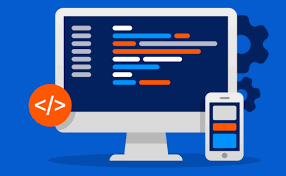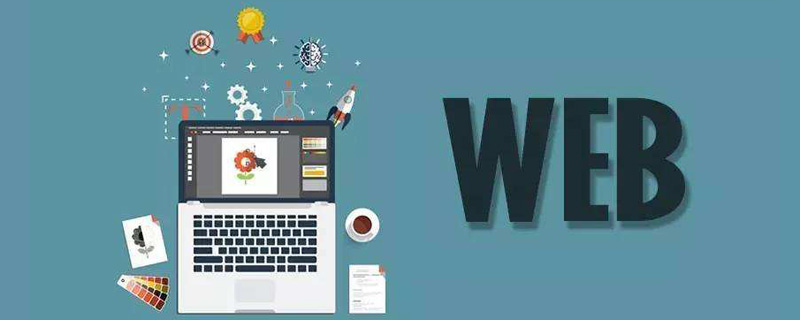Replacing the mouse pointer style with CSS is achieved with built-in cursor and custom pictures. 1. The built-in cursor styles include auto, default, pointer, text, wait, help, and directly set such as button { cursor: pointer; }; 2. Custom pictures need to use url() to specify .cur or .png files, and provide fallback solutions, such as .custom-cursor { cursor: url('icon.cur'), ??auto; }; 3. You can set hot spots such as cursor: url('pointer.cur') 10 10, pointer; 4. It works best when applied to games, creative websites or special interaction prompts, but it should be noted that the mobile side does not support custom cursors, performance impacts and user habits.

Want to change the mouse pointer style on the webpage? In fact, it can be done with cursor attribute of CSS, and it is not difficult.

Common built-in cursor styles
CSS provides some commonly used cursor styles that can be used directly. For example, the default arrow, hand shape, text input I-shaped, etc. These are natively supported by the browser and have better compatibility.

Common values ??include:
-
auto: The browser automatically decides -
default: standard arrow -
pointer: hand shape (commonly used for clickable elements) -
text: I-shaped, suitable for input box -
wait: Wait state (usually hourglass or circles) -
help: an arrow with a question mark, prompting help information
The usage is very simple, such as adding a hand shape to a button:

button {
cursor: pointer;
}This writing method is very direct and is the most commonly used method.
Customize the picture as the cursor
If you want a more personalized mouse style, such as a small icon or brand-style pointer, you can use custom pictures.
CSS supports specifying cursor images through URLs, and the format is as follows:
.custom-cursor {
cursor: url('path/to/icon.cur'), ??auto;
}A few points to note:
- Image format
.curor.png,.curis a dedicated format for Windows cursors, with the best compatibility - It is best to provide multiple sizes, and some systems will select the right image based on resolution
- If the image fails to load, the subsequent
autoordefaultwill take effect as a fallback solution - You can set the hotspot position (i.e. the exact point when clicked), the syntax is
url(...) xy, fallback, for example:cursor: url('pointer.cur') 10 10, pointer;
However, it should be noted that not all browsers fully support custom cursors, especially mobile devices do not support them. Therefore, when using it, you should consider whether it affects the user experience.
Application scenarios and precautions
When is it suitable to change the cursor? Common uses include:
- Game page: Combined with the overall style to enhance immersion
- Creative websites: such as drawing tools and display pages to enhance visual unity
- Special interaction tips: For example, when dragging and zooming, change to specific icons
But also note:
- Don't change the cursor casually, especially where there shouldn't be any changes, as it can easily confuse users
- The mobile version does not support custom cursors, and
url()part will be ignored on iOS and Android. - Large images or animation cursors may affect performance, it is recommended to control file size
- Users are used to standard cursors, too fancy designs may be distracting
Ending
In general, setting up custom mouse pointers with CSS is not complicated, but compatibility and user experience should still be considered in actual applications. Some details such as hotspot settings and format selection are easily overlooked, but they have a great impact on the effect. Basically that's it.
The above is the detailed content of Setting Custom Mouse Pointer Icons Using CSS cursor Property. For more information, please follow other related articles on the PHP Chinese website!

Hot AI Tools

Undress AI Tool
Undress images for free

Undresser.AI Undress
AI-powered app for creating realistic nude photos

AI Clothes Remover
Online AI tool for removing clothes from photos.

Clothoff.io
AI clothes remover

Video Face Swap
Swap faces in any video effortlessly with our completely free AI face swap tool!

Hot Article

Hot Tools

Notepad++7.3.1
Easy-to-use and free code editor

SublimeText3 Chinese version
Chinese version, very easy to use

Zend Studio 13.0.1
Powerful PHP integrated development environment

Dreamweaver CS6
Visual web development tools

SublimeText3 Mac version
God-level code editing software (SublimeText3)
 How does React handle focus management and accessibility?
Jul 08, 2025 am 02:34 AM
How does React handle focus management and accessibility?
Jul 08, 2025 am 02:34 AM
React itself does not directly manage focus or accessibility, but provides tools to effectively deal with these issues. 1. Use Refs to programmatically manage focus, such as setting element focus through useRef; 2. Use ARIA attributes to improve accessibility, such as defining the structure and state of tab components; 3. Pay attention to keyboard navigation to ensure that the focus logic in components such as modal boxes is clear; 4. Try to use native HTML elements to reduce the workload and error risk of custom implementation; 5. React assists accessibility by controlling the DOM and adding ARIA attributes, but the correct use still depends on developers.
 Server-Side Rendering with Next.js Explained
Jul 23, 2025 am 01:39 AM
Server-Side Rendering with Next.js Explained
Jul 23, 2025 am 01:39 AM
Server-siderendering(SSR)inNext.jsgeneratesHTMLontheserverforeachrequest,improvingperformanceandSEO.1.SSRisidealfordynamiccontentthatchangesfrequently,suchasuserdashboards.2.ItusesgetServerSidePropstofetchdataperrequestandpassittothecomponent.3.UseSS
 A Deep Dive into WebAssembly (WASM) for Front-End Developers
Jul 27, 2025 am 12:32 AM
A Deep Dive into WebAssembly (WASM) for Front-End Developers
Jul 27, 2025 am 12:32 AM
WebAssembly(WASM)isagame-changerforfront-enddevelopersseekinghigh-performancewebapplications.1.WASMisabinaryinstructionformatthatrunsatnear-nativespeed,enablinglanguageslikeRust,C ,andGotoexecuteinthebrowser.2.ItcomplementsJavaScriptratherthanreplac
 How to manage component state using immutable updates in React?
Jul 10, 2025 pm 12:57 PM
How to manage component state using immutable updates in React?
Jul 10, 2025 pm 12:57 PM
Immutable updates are crucial in React because it ensures that state changes can be detected correctly, triggering component re-rendering and avoiding side effects. Directly modifying state, such as push or assignment, will cause React to be unable to detect changes. The correct way to do this is to create new objects instead of old objects, such as updating an array or object using the expand operator. For nested structures, you need to copy layer by layer and modify only the target part, such as using multiple expansion operators to deal with deep attributes. Common operations include updating array elements with maps, deleting elements with filters, adding elements with slices or expansion. Tool libraries such as Immer can simplify the process, allowing "seemingly" to modify the original state but generate new copies, but increase project complexity. Key tips include each
 Security Headers for Frontend Applications
Jul 18, 2025 am 03:30 AM
Security Headers for Frontend Applications
Jul 18, 2025 am 03:30 AM
Front-end applications should set security headers to improve security, including: 1. Configure basic security headers such as CSP to prevent XSS, X-Content-Type-Options to prevent MIME guessing, X-Frame-Options to prevent click hijacking, X-XSS-Protection to disable old filters, HSTS to force HTTPS; 2. CSP settings should avoid using unsafe-inline and unsafe-eval, use nonce or hash and enable reporting mode testing; 3. HTTPS-related headers include HSTS automatic upgrade request and Referrer-Policy to control Referer; 4. Other recommended headers such as Permis
 What are custom data attributes (data-*)?
Jul 10, 2025 pm 01:27 PM
What are custom data attributes (data-*)?
Jul 10, 2025 pm 01:27 PM
The data-* attribute is used in HTML to store additional data, and its advantages include that the data is closely related to elements and comply with HTML5 standards. 1. When using it, name it starts with data-, such as data-product-id; 2. It can be accessed through JavaScript's getAttribute or dataset; 3. Best practices include avoiding sensitive information, reasonable naming, paying attention to performance and not replacing state management.
 Applying CSS Styles to Scalable Vector Graphics (SVG)
Jul 10, 2025 am 11:47 AM
Applying CSS Styles to Scalable Vector Graphics (SVG)
Jul 10, 2025 am 11:47 AM
To style SVGs using CSS, you first need to embed SVGs inline into HTML for fine control. 1. Inline SVG allows its internal elements such as or to be directly selected through CSS and to apply styles, while external SVG only supports global styles such as width and height or filters. 2. Use regular CSS syntax such as .class:hover to achieve interactive effects, but use fill instead of color to control the color, and use stroke and stroke-width to control the outline. 3. Use class names to organize styles to avoid duplication and pay attention to naming conflicts and scope management. 4. The SVG style may be inherited from the page, and can be reset through svg*{fill:none;stroke:none;} to avoid
 How to add a favicon to a website?
Jul 09, 2025 am 02:21 AM
How to add a favicon to a website?
Jul 09, 2025 am 02:21 AM
Adding website Favicon requires preparing icon files, placing the correct path and quoting them. 1. Prepare multi-size .ico or .png icons, which can be generated by online tools; 2. Put favicon.ico in the website root directory; 3. If you need to customize the path or support more devices, you need to add a link tag reference in the HTMLhead; 4. Clear the cache or use the tool to check whether it is effective.






